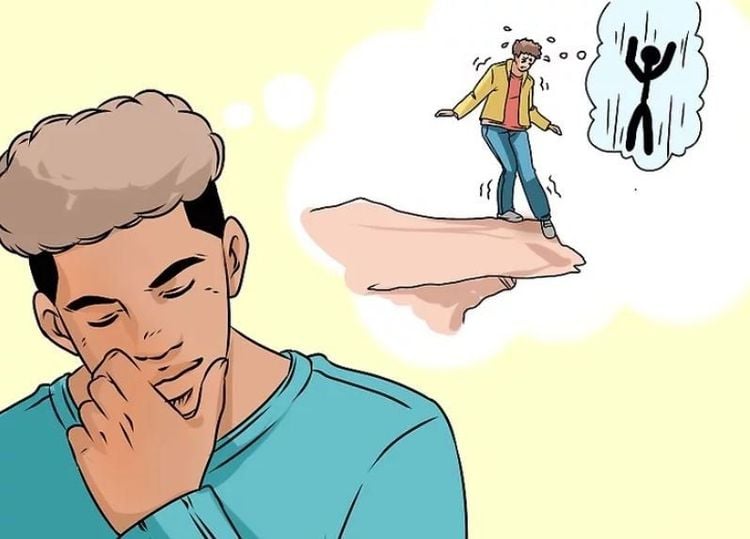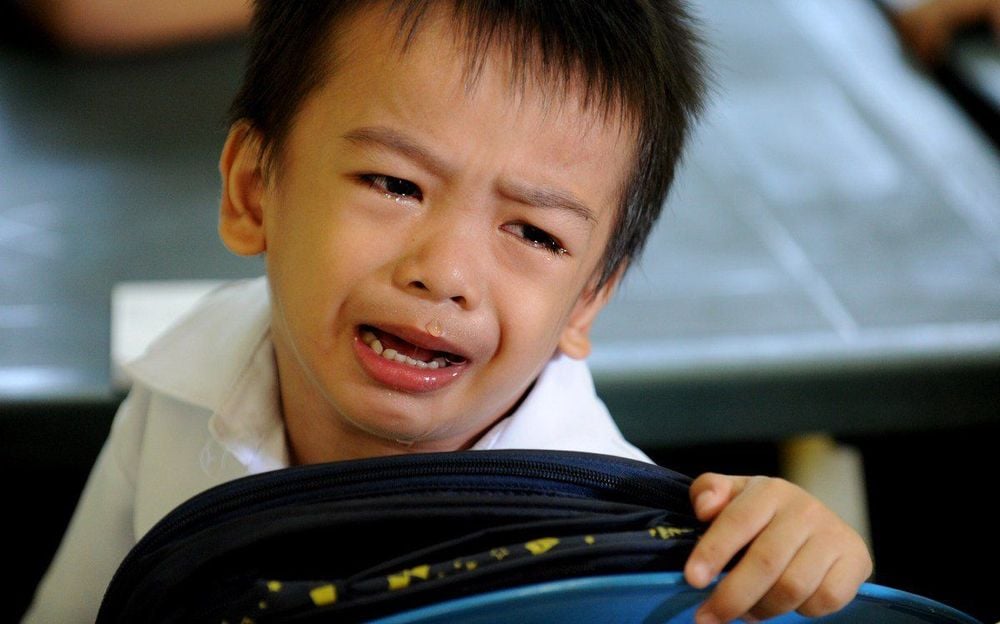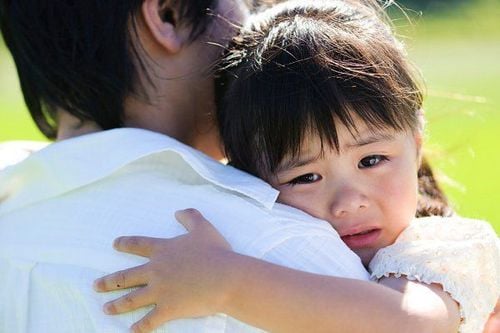This is an automatically translated article.
The article was professionally consulted by Dr. Le Thu Phuong - Department of Pediatrics - Neonatology - Vinmec Hai Phong International General Hospital.Fear of heights affects many people of different ages, including children. Many people think that fear of heights is not dangerous, but in fact it can lead to dangerous health conditions if not treated promptly.
1. What is fear of heights?
Altitude sickness refers to symptoms that can occur when a person takes in less oxygen than is normal when the person travels to an altitude of 8000 feet (about 2,400m) or more.Up to half of people who climb to a height of 2,500m may have acrophobia. Each person will have different manifestations, which may be acute fear of heights, or pulmonary or cerebral edema. The higher the climb and the faster the ascent, the higher the risk of altitude sickness.
We often assume that the higher you go, the less oxygen there is in the air. In fact, the oxygen concentration in the air at the top of the mountain is the same as the oxygen concentration in the air below the beach. The difference is that the air pressure at the top is much lower.
The lower the air pressure, the less oxygen you inhale. If your body doesn't adapt to this amount of oxygen in time, you can start to feel tired.
Fear of heights can happen to anyone, regardless of age or physical level. Some people are more susceptible to this disease than others. People who live at higher altitudes and those who stay there for a while, they get used to absorbing less oxygen and performing better.
People who move quickly, especially when they are physically active, are more likely to experience altitude sickness.

2. Types of fear of heights
Acrophobia can be classified into the following categories:Acute altitude sickness: is the mildest and most common type of agoraphobia. The symptoms of this condition are similar to those of a hangover: headache is the main symptom, sometimes accompanied by fatigue, loss of appetite, nausea and occasionally vomiting. Headache onset is usually 2 to 12 hours after reaching higher altitudes and is often during or after the first night. Children show anorexia, irritability, pale skin.
Acute altitude sickness usually resolves on its own in 12 - 48 hours. After this period of time, the body can adapt to the air pressure there.
High-altitude pulmonary edema: High-altitude pulmonary edema may occur with acute altitude sickness and high-altitude cerebral edema. The initial symptoms of this condition are dyspnea that increases with exertion and eventually worsens dyspnea at rest, combined with fatigue and cough. High-altitude pulmonary edema can be rapidly fatal in children. The fastest way to fix it is to give the child oxygen or take the child down.
High-altitude cerebral edema: High-altitude cerebral edema is a severe progression of acute altitude sickness. This condition is rare, it is often associated with high-altitude pulmonary edema. In addition to the symptoms of acute altitude sickness, the patient may fall into a severe coma, accompanied by drowsiness, confusion, and loss of balance when walking, like a drunkard.
People with high-altitude cerebral edema need to be brought down immediately, otherwise they can die within 24 hours of losing their balance.
3. Fear of heights in children
There is no guarantee that your child will have a fear of heights. But if you're planning on traveling to higher altitudes than where you live, you may want to take the time to acclimate to the environment.If you plan to move to an altitude of 1,500m, your child probably won't have any trouble with agoraphobia. But if you're moving to an altitude of 2,400m or more, your child may need a few days to acclimate, so spend a night or two at mid-altitude first. Then every day you can move to a place with an altitude difference of about 300m.
However, if your child has chronic heart or lung disease or any systemic illness that affects breathing, you should check with your doctor before taking your child to high altitudes. than.
If your baby is under 6 weeks old, you need to talk carefully with the doctor, because these babies are very susceptible to altitude sickness.

4. Children's expressions of fear of heights
It's not easy for you to identify altitude sickness in your child, as early symptoms are nonspecific. Symptoms can appear as early as an hour or two after arriving in a higher elevation area, but typically begin to appear 8 to 36 hours after arrival.You may notice a change in your normal behavior such as:
Your child may have difficulty eating or sleeping; The child may become unusually irritable; The child may have a headache, dizziness, or fatigue; Children may have difficulty breathing on exertion; Children may experience nausea and vomiting. If your child develops more severe symptoms of altitude sickness, he or she may have symptoms such as:
The child's complexion may be pale or blue; The child may have a cough; The child may have more difficulty walking than usual; The child has rapid breathing even at rest; If your child is vomiting, he or she may also show signs of dehydration.

5. What can be done to reduce the symptoms of fear of heights in children?
If your child shows only mild signs of acute altitude sickness, you can take your child to a lower altitude so he can acclimate gradually. These symptoms usually subside after a few days.While you wait for your baby to acclimate, give them plenty of water to make sure they don't become dehydrated. You can often give your child small sips of water or an electrolyte solution to prevent dehydration, especially if your child is vomiting.
If your child has a headache, you can give him an over-the-counter pain reliever such as Acetaminophen or Ibuprofen at the appropriate dose for children 6 months of age and older. (You should still consult your doctor because these medicines, when given to children, must be taken by weight, but usually, the bottle is usually indicated by age. This sometimes does not give the right effect. )
You can also encourage your child to breathe more deeply and at a slightly faster rate than usual to get more oxygen.
If your child has trouble breathing or the skin and mucous membranes turn blue-violet (lips, fingertips, toes are no longer pink), or there are other more dangerous signs, take the child to the nearest emergency room. best. Here, the doctor can measure the oxygen saturation of the baby's blood and find out if the child has altitude sickness.
If the child has severe symptoms, the doctor may order the baby to do blood tests, CT scan, chest X-ray or electrocardiogram to check.
If the child has acute altitude sickness, the doctor may give the child oxygen and recommend that you take the child to a lower altitude.
If your child has high-altitude pulmonary edema or high-altitude cerebral edema, he or she will need to be treated and monitored closely, as these conditions can be life-threatening.

6. Prevention of fear of heights in children
The best way you can reduce your child's risk of altitude sickness is through adaptation. That means you let your baby's body slowly get used to the changes in air pressure as you move to higher altitudes.You will want to gradually ascend to higher altitudes. Moving slowly helps your baby's lungs get more air through deeper breathing and allows more red blood cells to carry oxygen to other parts of the body.
Some measures to help you and your child acclimate are:
Start your journey below 10,000 feet (about 3,000m) If you have to move or drive somewhere higher, stop at a lower point for at least a day before moving on. If you walk, or climb more than 10,000 feet, you should only walk an extra 1,000 feet (300m) per day. For every 3,000 feet climb, take a day off at that altitude. If you have to climb more than 300m in a day, make sure you return to a lower altitude to sleep. Drink enough water and make sure about 70% of your calories are from carbs. Do not use tobacco, alcohol or other drugs. Know how to recognize the first signs of altitude sickness. Immediately move the child to a lower altitude if the child begins to show symptoms of altitude sickness. Fear of heights is a common illness that can affect people of all ages, including children. This disease is not as harmless as many people think, it has many different degrees, severe levels, seriousness can be life-threatening for children. You need to recognize the symptoms of altitude sickness and how to handle and prevent them, to ensure the safety of your child during trips to higher altitudes.
To proactively protect your baby's health, you should take your baby to a reputable medical facility that performs altitude checks for your baby to proactively take measures to prevent and handle when you intend to bring your baby to the next destination. where the altitude is higher than where you live. To perform these tests, take your baby to a medical facility with pediatricians for the most comprehensive and complete examination.
Vinmec International General Hospital is one of the few hospitals with a full range of specialists: respiratory, neurology, cardiology, psychology,... right at the Pediatric Department. When examined and treated here, the baby will be comprehensively examined just in the same Pediatric Department, saving time, cost, and bringing the best results. Doctors can detect underlying diseases, reducing the risk of harm to the baby's health. In addition, psychologists also help reassure and prepare children mentally to face possible fear of heights.
The medical team are well-trained, highly qualified, experienced, regularly participate in pediatric seminars with leading experts in the world, update new knowledge, The most advanced treatment techniques in the world, bring the best treatment results for pediatric patients.
If you have a need for examination and treatment with leading pediatricians in Vinmec, please book an appointment directly at the website or contact the hotline for service.
Please dial HOTLINE for more information or register for an appointment HERE. Download MyVinmec app to make appointments faster and to manage your bookings easily.
References: babycenter.com, cdc.gov, webmd.com, ncbi.nlm.nih.gov










